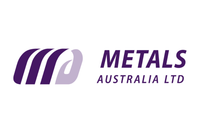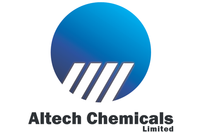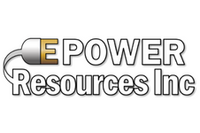Magnis Energy Technologies Ltd (“Magnis” or the “Company”) (ASX:MNS) is pleased to present its Quarterly Activities Report for the period ended 31 March 2019.
HIGHLIGHTS
• New York Battery Plant – Debt Term Sheet for US$52M
• Townsville Battery Plant – Project Feasibility Study Update
• Nachu Graphite Project Update
• Interest and discussions on first battery plant for India
Magnis Energy Technologies Ltd (“Magnis” or the “Company”) (ASX:MNS) is pleased to present its Quarterly Activities Report for the period ended 31 March 2019.
The major activities announced during the past quarter are summarised in this report.
New York Battery Plant Funding
The Company announced to the ASX on 18 March 2019, that Imperium3 New York (“iM3NY”) had signed a Term Sheet for US$52 Million in funding, via a pre-issued European bond used to fund renewable energy projects.
After an eight-week due diligence process on iM3NY, a term sheet was issued and signed. The debt financing consists of two stages, the first payment of US$30,000,000 on completion of final documentation and checks by both parties, with the remaining amount to be issued 12 months after the first payment with no milestone attached. Loan documents were recently received and reviewed by lawyers representing iM3NY with comments regarding the document sent to the lender and the Company will provide more information as it becomes available. In addition to the Term Sheet signed, iM3NY has received interest regarding debt and equity financing options with due diligence processes in the final stages.
Magnis has a current indirect and direct shareholding of 47% in iM3NY. Near-term production is the main goal and the board of iM3NY will be assessing all funding proposals with a strong preference given to the option allowing early production.
The former Alevo battery plant purchased in the first half of 2018, with a replacement value in the order of US$200 million, was disassembled and transported to Endicott, New York in the second half of 2018. Since that time, there has been significant planning effort towards the re-engineering of the plant to a capacity of over 1GWh annually using C4Vs (Magnis’ battery partner), patented BM-LMP chemistry. Qualification of materials and component inputs for battery manufacture has also been performed in parallel involving over 40 different potential suppliers to the plant. Current schedule aims to have battery production starting within 12 months of funding closure with offtake contracts in place for the majority of the first 3 years of planned production. The C4V product design team has been building battery cells with retrofitted processes to the existing machine design making improvements wherever necessary while continuously delivering cells and packs to already contracted customers for market qualification. In addition to the floor plan, additional machine design (such as an automated electrolyte dispensing machine) and process improvement is on-going to accelerate the production process.
Townsville Project Feasibility Study Update
Imperium3 Townsville (“iM3TSV”) has made major progress on the feasibility study it is undertaking for a 15 GWh lithium-ion cell manufacturing facility in Townsville, Queensland. Magnis has a one third ownership in iM3TSV. The initial findings support the rapid development in both the business case and technical solution for this project.
The study to date confirms the suitability of Townsville as a large-scale manufacturing region due to:
• Market proximity to rapidly growing Asian economies where electrification of transport and renewable energy are emerging as disruptors in global markets;
• Logistics with easy access to Townsville Port and local availability of battery materials and precursors such as lithium and manganese;
• The right people to execute with a supportive government and project team with unrivalled expertise in lithium-ion battery (LIB) innovation, business development and project delivery;
• Townsville’s plans to be a leading city of the future with an ambition to become the centre of high technology manufacturing with an emphasis on sustainability.
Figure 1: GHD developed LIB Manufacturing Plant Aerial View
Business Case
The business case for the 15 GWh LIB manufacturing facility at Townsville continues to positively evolve across the following key areas:
• Strong Battery Market Fundamentals. Electrification of mobility and the transition to renewables continued unabated in 2018. Global growth in electric vehicle sales was over 50% above that for 2017 with 2019 forecast to deliver even greater growth as automotive manufacturers broaden their EV offering across their fleet;
• Growing Government Support. The average cost of energy generated by renewable solar and wind projects fell below the average cost of existing alternatives in 20181. This has encouraged public support for climate action in many jurisdictions around the world through lower power prices, new policies incentivising electromobility, renewables and LIB storage;
• Local Business Engagement. iM3 TSV is also investigating and identifying future participation of local businesses in both the construction and operating phases of the project. iM3’s scoping study established local content opportunities to be in the order of A$300 million across a range of items including labour, power, fuel, security and logistics;
• Global Partnering. iM3 TSV is continuing to establish global partnerships with component suppliers, industry specialists and tertiary education organisations (international and national). Testing and qualification of battery input materials involving over 30 well known global suppliers has occurred over the past 12 months in iM3’s facility located in upstate New York;
• Downstream Co-Location Opportunities. Opportunities representing an additional potential economic gain to the local economy in the order of US$750M to US$1.5B annually; and
• Cost Competitiveness. iM3 is engaging with each level of government to seek to create supportive policy, targeted incentivisation and collaboration for future R&D initiatives.
The economic and strategic benefits of the project include
• Creating approximately 750 jobs in a high technology manufacture;
• Promoting sustainable industries in North Australia;
• Supporting Townsville through the current local economic downturn;
• Realising higher value from Australia’s resource endowment; and
• Transitioning Australia to low carbon economy and associated industries.
Figure 2: View of Townsville LIB Office
Technical Solution
Creating Australia’s first Giga-scale LIB manufacturing facility has required bringing together the technical expertise of global equipment vendors with local engineering specialists. Ausenco, which is based in Brisbane, is overseeing process development and the GHD office in Townsville is overseeing site development and building design.
Board Changes
Dr. Ulrich Bez resigned from the Board of Directors effective 28 February 2019.
The Company announced on 5 March 2019 that Mr Leslie Hosking joined the Board as a Non-Executive Director
Les has a long and distinguished career which spans over four decades in Australian business with a strong focus in the energy and the global futures industries. Currently, he is serving as an Independent Non-Executive Director of AGL Energy Limited (ASX: AGL) and is an Adjunct Professor of the University of Sydney John Grill Centre for Project Leadership. Previously Les was the Chief Executive Officer and Managing Director of the Sydney Futures Exchange, Chairman of Adelaide Brighton Limited (ASX: ABC), Chief Executive Officer of Axiss
Australia an Australian Government inward investment agency used to promote Australia as a global financial service and a Director at the Australian Government’s Industry Research and Development Board.
In the domestic energy industry, Les has served as the Chief Executive Officer and Managing Director at National Electricity Market Management Company (NEMMCO), Director of the Australian Energy Market Operator (AEMO), The Carbon Market Institute Limited and Innovation Australia Pty Ltd.
Nachu Graphite Project Update
Compensation Program
The Compensation Program resulting from the Land and Asset Valuation that Magnis subsidiary, Uranex Tanzania Ltd (“Uranex”) undertook, was completed for all Project Affected Persons (PAP) within the Nachu Graphite Special Mining Licence (SML) in accordance with the laws and guidelines of Tanzania, guiding valuation of assets for compensation and resettlement programs.
The main valuation process was approved by the Chief Valuer (CV) in December 2016, and a signing of the Supplementary Valuation Report by the CV occurred in July 2018 concluding legal occupancy of the SML land by Uranex in accordance with the Act Supplementary No.11 dated 23rd March 2018: The Valuation and Valuers (General) Regulations, 2018. Within the SML, 785 PAP were identified in total for the Valuation and Resettlement Program.
By 21 January 2017, a total of 720 PAP were paid a sum of TZS 6.7 Billion (~AUD 4.064 million). During November 2018 land payments to the remaining PAP accounted for a sum of TZS 643 Million (~AUD 386 thousand) making a cumulative total of TZS 7.4 Billion (~AUD 4.5 million) for paid compensation for land and assets as per the approved Valuation Report.
In conjunction with clear access to the ground and to allow unrestricted ground clearance where required, the grave sites identified during the valuation have also been compensated for and relocated. The grave relocation program is 100% complete with grave payments totalling a sum of TZS 45.3 Million (~AUD 27 thousand) and all graves were relocated to local demarcated village grave yards. The successful completion of removal of graves in the SML concession, allows commencement of initial ground disturbing project development activities
such as vegetation clearance and improving access.
In a media conference held in Lindi, Tanzania, on 15 January 2019, the Lindi Regional Commissioner Hon. Godfrey Zambi stated “The Government of Tanzania recognises the efforts of Uranex during the valuation and land compensation process, the Company and consultants performed in a professional and very correct manner to assure all the Project Affected People were compensated fairly and timely.”
Resettlement Program
As part of the Magnis valuation and compensation program, there is a need to look after the relocation of families that resided within the Special Mining License area. 59 households ranging from relatively well-built local clay fired brick houses that are roofed with corrugated iron sheets to poorly built mud walled, and grass thatched houses were identified to be inside the SML area. These people must be resettled elsewhere or placed into short term rental accommodation whist new housing is built to make way for development of the mine and its infrastructure.
Magnis has decided to build alternative modern houses outside the SML and to do so, has acquired 54 acres of land outside the SML area to build houses for the affected households falling inside the SML. This village land is currently named Nachu Village and since it will host a minimum of 59 households, key social facilities will be required to support the population of the area. The Nachu Village will likely in time, become a small township and for this reason, a separate ESIA study was completed to identify, assess and focus on all positive and negative impacts generated by the establishment of such a small township to properly mitigate the negative impacts and enhance positive benefits of establishing such a village. The ESIA is a key planning and management tool of the township during the construction and operational phase of the Nachu Village project.
Uranex has received the Environmental Certificate approving and accepting the ESIA report and the measures within and in turn allowing the next phase of proceeding with the resettlement village including a local District building permit and finalisation of construction tender processes.
Corporate and Social Responsibility (CSR)
As part of a larger education CSR initiative, Uranex surveyed, mapped, prepared and then presented maps to the Ruangwa District Authority so that the school system and distribution was clearly known to all parties in order to highlight and discuss education and proximity challenges. A follow up campaign has been ongoing this quarter to distribute to schools, maps of Tanzania and story books to provide some education support material for teachers and students.
Figure 3: Uhuru Primary School teachers and pupils receiving books and maps from Magnis subsidiary company,
Uranex Tanzania Limited
Engineering, Procurement, Construction and Finance (EPC+F) Discussions
In recent weeks senior level Magnis representatives have held domestic and overseas meetings with a global engineering group regarding EPC+F for the Nachu Graphite Project. These meetings also included a visit to the Nachu site, with the Company aiming to release more definitive details of any EPC and Finance packages once agreements have been made.
Potential Indian lithium-ion battery plant
The Company released information to the ASX on 21 January 2019, regarding an announcement by The Government of India’s Ministry of Heavy Industries and Public Enterprises, advising that BHEL was in dialogue with LIBCOIN on the building of India’s first lithium-ion battery (LIB) Gigafactory beginning at 1GWh and scaling up to 30GWh. BHEL is a global energy powerhouse with its equipment accounting for 60% of India’s power generation. BHEL is a leading state-owned company with more than 50 years of experience, wherein The Government of India is holding 63.06% of its equity. BHEL is an integrated power plant equipment manufacturer and one of the largest engineering and manufacturing organisation in India, catering to the core infrastructure sectors of the Indian economy. The annual turnover of BHEL for the year 2017-18 was approximately US$4.1 Billion with over US$8 Billion in assets. BHEL’s highly skilled and committed employees amount to 37,500 in number.
BHEL has technology tie-ups with leading providers that include General Electric, Siemens, Metso Automation Inc and Kawasaki Heavy Industries Ltd.
LIBCOIN is a consortium made up of Magnis, Duggal Family Trust and Charge CCCV (“C4V”) and has a vision to build large LIB gigafactories globally with the significant focus being on the Indian market. Currently, Magnis has a 20% non-dilutive stake in LIBCOIN. The consortium plans to maintain a technical competitive advantage through existing and new unique IP, that will continue to deliver superior LIB cells by delivering vertically integrated global procurement capability throughout the LIB Battery Supply Chain.
The consortium has been in discussions with BHEL for almost twelve months and is the natural choice as a partner on the project as they are synonymous with power generation in India. BHEL is a household name in India and carries a history of quality and expertise in the power sector and has significant requirements for LIBs in the short-term with those requirements growing exponentially in the long-term.
Discussions are currently taking place with BHEL and other groups who are looking at supporting the creation of a lithium-ion cell manufacturing plant in India. With all discussions being ‘Commercial in Confidence’, the Company will announce any developments as they come to hand.
Funding
The cash position for the Company at 31 March 2019 was A$3.86M. The Company has a 10% interest in battery technology group C4V and has provided a short-term loan of A$1.2M to C4V that is expected to be repaid over the next two quarters.
Tenements
The following are the Mineral Tenements held by the Company:
SML550/2015 SML Nachu (100%)
PL10929/2016 Nachu (100%)
Notes:
1. https://reneweconomy.com.au/australias-plunging-wind-solar-storage-costs-stun-fossil-fuel-industry-60383/
Marc Vogts
Managing Director
Magnis Energy Technologies Ltd
+61 2 8397 9888
www.magnis.com.au
Click here to connect with Magnis Energy Technologies (ASX:MNS) for an Investor Presentation.





